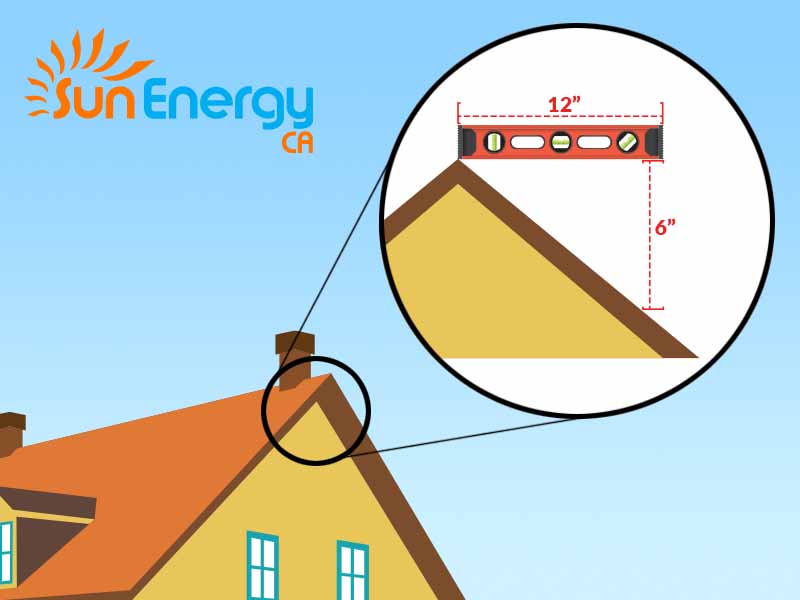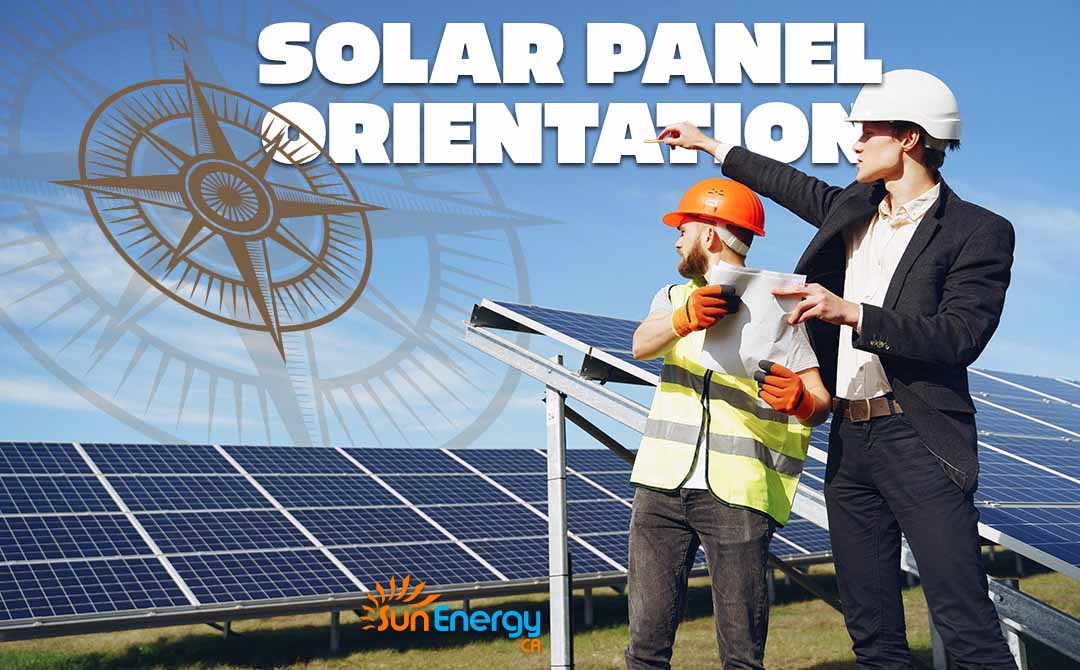The amount that your roof direction will affect the efficiency of your solar panels relies both on the direction (known as the Azimuth angle) of your roof as well as the slope (also called pitch) of your roof. It’s important, when you invest in rooftop solar panels, that the cells be placed in the best available places for optimal output.
What is the Azimuth angle?
The Azimuth angle is the angle in which your roof faces and it is the first factor used when determining how much sun your solar panels will soak up during the day. Solar cells are most effective when installed on roofs that are facing the Southern direction. However, even if your roof doesn’t face South, your solar panels can still produce a significant amount of electricity and many of our customers find that their solar panels generate more than enough power for their home, regardless of their home’s roof orientation. You can also mount solar panels in different locations to maximize their efficiency. For example, you can use the roof of another building or a garage, or even on the ground.
How do I know the direction my roof faces?
The simplest way to figure out the direction that your roof faces is to use Google Maps and type in your address to find your property. From there, you can use the grid provided to find the South point. Once you have found true South, you should be able to reference the direction of your roof. Our solar advisors here at Bright Solar Power California can also help you figure this out so don’t hesitate to give us a call at 442-242-7374.
What is Pitch?
Pitch is defined as the amount of vertical rise your roof when measured from a horizontal 12 inches. In the illustration below, the pitch is 6:12. This means that the vertical rise measurement of the roof is 6 inches and the horizontal run measurement is 12 inches.

Measuring the pitch is important when investing in rooftop solar energy because it impacts the amount of tilt towards the sun for the photovoltaic array. Sometimes, if a roof is particularly flat, additional tilting will be added to the solar panels to improve their exposure to the sun and make them more efficient.
How much will the direction of my roof affect the efficiency of my solar panels?
As mentioned earlier in this post, the overall direction of your roof, along with its pitch, are the most influential factors when determining the efficiency of your solar panels.
Typically, if your roof is flatter than the average roof, there is less chance that your energy production will decrease when the panels face East or West as opposed to the South. If your roof is steeper and your panels face East or West, it can be trickier to maximize their production.
My roof doesn’t face South. Now what?
Don’t worry. You’re not doomed if you don’t have a South-facing roof. We have a lot of customers in the same predicament whose solar panels face East or West and they have more output from their rooftop solar than they need – which allows them to participate in Net Energy Metering and get credits from their utility company for the energy they DON’T use. So, don’t let your roof direction deter you from inquiring about going solar, as roof direction is not a dealbreaker.
Should your roof not be adequate to produce the amount of power you need for your household, you can also install solar panels on the ground. Ground mounts are a great alternative to those not-so-ideal roofs and they don’t take up much space. They are also less costly to install and much easier to clean!
Go Solar with Bright Solar Power California!
You don’t have to live in the sunniest state or have a roof that faces directly South to save money with solar energy. Your monthly kilowatt usage and energy bill amounts are the most important when determining whether or not solar energy is right for you.
Here at Bright Solar Power California, we offer free consultations and no-pressure estimates, so please don’t hesitate to reach out to one of our awesome solar advisors at 442-242-7374 or visit us on the web and use our solar calculator.
As always, if you have any questions about going solar, let us know! We love to help and educate our customers so they can make the best decisions for themselves and their families. We look forward to hearing from you!
**Customer’s ability to monetize rebates, incentives and tax credits depends on several factors, including, without limitation, continued state subsidization of these policies, the applicable Bright Solar Power CA product type, and whether a customer purchases or leases a solar panel system from Bright Solar Power CA.**

